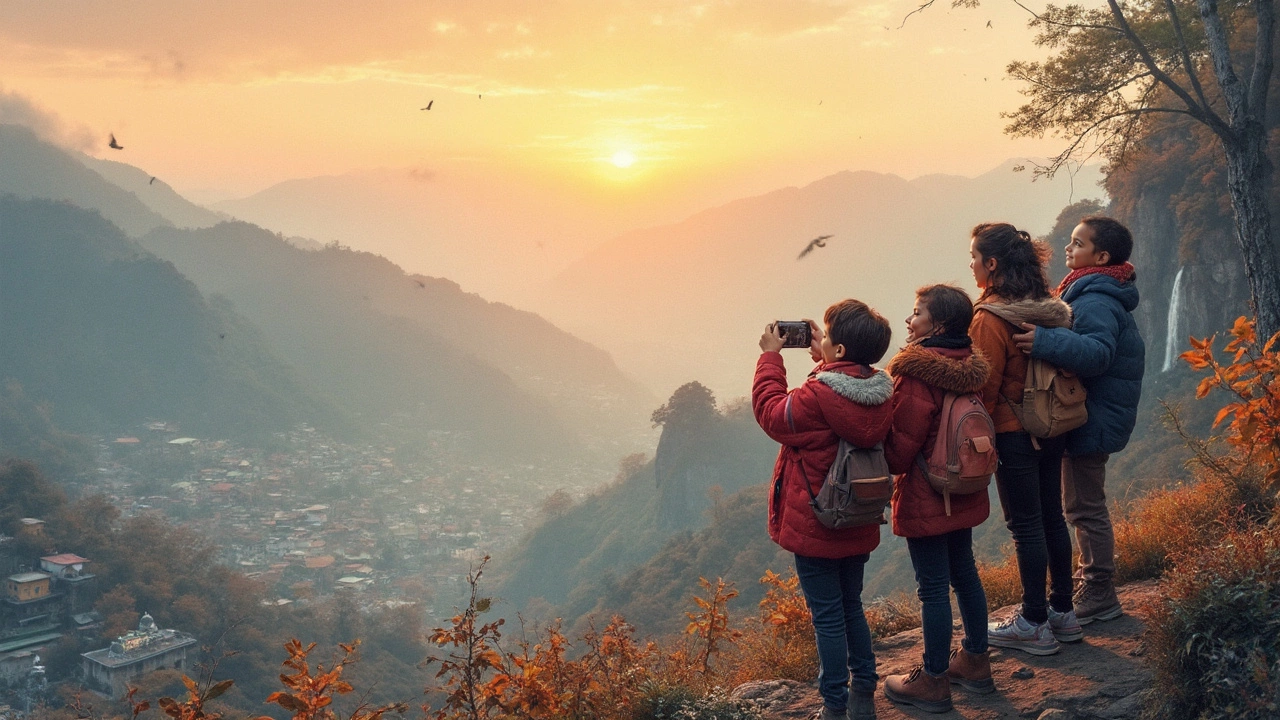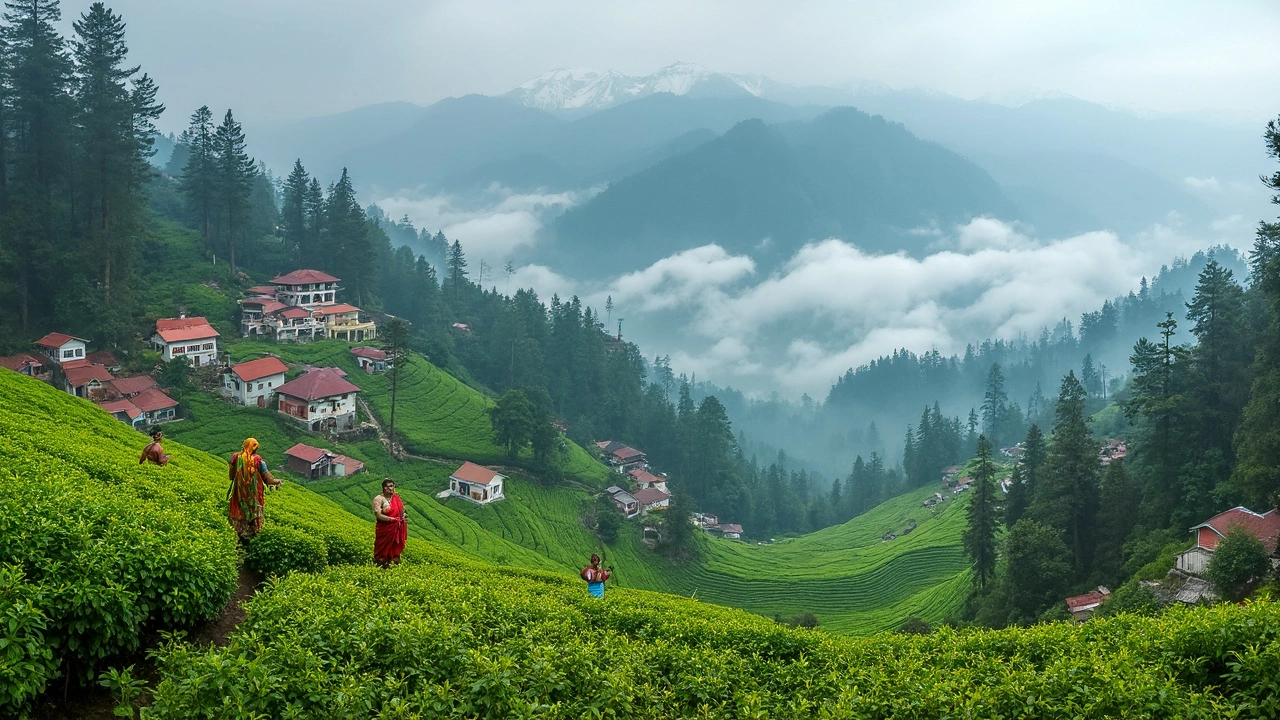Ever wondered which Indian state really wins the crown for most hill stations? You hear about Shimla, Darjeeling, Ooty—basically, if it’s lush and high up, it gets called a hill station. But when you look at the numbers and not just the hype, things get interesting.
Not every ‘mountainous’ state is overflowing with cozy hill towns. Some places have famous names, but the actual count is way lower than you’d expect. The Himalayan belt and the Western Ghats play a big part, but you’d be surprised who leads the pack. Get ready to fix your travel bucket list, because we’re breaking down where you’ll find the most options in one state—plus some quick tips on spotting underrated gems, not just the tried-and-tested tourist stops.
- Why Do Some States Have So Many Hill Stations?
- The State with the Maximum Hill Stations
- Hidden Gems vs. Tourist Hotspots
- Tips to Choose Your Ideal Hill Station
Why Do Some States Have So Many Hill Stations?
It mostly boils down to location and, no joke, the weather. States that have big mountain ranges like the Himalayas or the Western Ghats end up with way more hill stations than places with flat or dry land. The British, back in the day, built a bunch of these high-altitude towns to escape hot Indian summers, so you’ll see clusters of them wherever the climate gets cool and the scenery is green.
In northern India, states like Himachal Pradesh and Uttarakhand are dotted with hill stations because the land is super hilly and packed with rivers, valleys, and snow-capped peaks. Southern states like Tamil Nadu and Kerala are in the picture too, thanks to the Western Ghats and their misty slopes.
It’s not just geography, though. Accessibility used to matter a lot. If you could reach a spot with an old-school toy train (think Darjeeling or Nilgiris), it had a good chance of turning into a legit tourist hotspot. Plus, the British left their mark through roads, cottages, and clubs that still draw visitors.
For a clearer picture, here’s a quick table showing which regions have the most officially recognized hill stations:
| State | Approx. Number of Hill Stations |
|---|---|
| Himachal Pradesh | 25+ |
| Uttarakhand | 20+ |
| Maharashtra | 15+ |
| Tamil Nadu | 10+ |
| West Bengal | 6+ |
Also, states with different cultures and historic trade routes often ended up with their own unique mix of hill stations. The more variety, the bigger the draw for tourism.
The State with the Maximum Hill Stations
If you’re chasing numbers, Himachal Pradesh easily takes the title for the state with the most hill stations in India. Seriously, ask any frequent traveler—no other state lines up so many cool weather getaways, each with its unique vibe and crowd. It’s not just about Shimla or Manali. The list is long and sometimes a bit surprising.
What makes Himachal stand out? It’s about geography and old-school popularity. Tucked in the western Himalayas, the region just has the perfect lay of the land—lots of valleys, slopes, forested stretches, and winding roads where each big turn seems to hide a new town or hill retreat. Take a look at some of the main hill stations in the state:
- Shimla: Still carrying the old British colonial charm and friendly bustle.
- Manali: A big hit for backpackers, couples, and adventure seekers.
- Dharamshala: Known for its Tibetan vibe and stunning mountain backdrops.
- Dalhousie: All pine forests, quiet lanes, and fresh mountain air.
- Kasauli: More low-key, perfect for laid-back weekends.
- Chail: Famous for its palace and the world’s highest cricket ground.
- Spiti and Keylong: More remote and raw, but definitely part of the lineup.
- Solan, Narkanda, Kufri, McLeod Ganj—the list keeps going.
To give you a sense, Himachal has over 15 recognized major hill stations, and even more lesser-known villages that started attracting travelers with homestays, eco-lodges, or hiking bases. Compare that to Uttarakhand, which has plenty of beauty but fewer classic hill stations (like Mussoorie, Nainital, Almora, and Auli).
Here’s a quick side-by-side for clarity:
| State | Number of Major Hill Stations | Popular Names |
|---|---|---|
| Himachal Pradesh | 15+ | Shimla, Manali, Dharamshala, Dalhousie, Kasauli, Chail |
| Uttarakhand | 7-8 | Mussoorie, Nainital, Almora, Auli |
| Tamil Nadu | 3-4 | Ooty, Kodaikanal, Coonoor |
If you’re set on exploring as many hill stations as possible, Himachal Pradesh is hands-down your playground. And the transport, from toy trains to buses weaving through valleys, makes hopping from one hill town to the next surprisingly doable.

Hidden Gems vs. Tourist Hotspots
If you ask around, most people have heard of big hill stations like Manali, Shimla, and Ooty. These spots get massive crowds year-round and are probably all over your Instagram feed. But here’s the thing—India’s packed with loads of lesser-known hill towns where you can escape the crowds and snag way cheaper stays, all while enjoying killer views.
Let’s set the record straight with a few basics. According to the Ministry of Tourism, Himachal Pradesh alone has more than 15 recognized hill stations that draw lakhs of visitors every year, but places like Mcleodganj and Dalhousie are just the tip of the iceberg. And in Uttarakhand, while Mussoorie and Nainital rake in millions, low-key spots like Kanatal or Chopta barely make the travel brochures.
“You don’t need to stick to famous names—there are small towns just a few kilometers away from hotspots where you’ll find better hospitality, no wait lines, and real peace,” says Raj Singh, founder of a leading travel agency in North India.
Here’s what sets popular tourist hotspots apart from hidden gems:
- Accessibility: Big-name spots have better roads, direct buses, and more trains. Hidden gems: Get ready for an extra drive, bumpy roads, or a short trek.
- Crowds & Cost: The more famous, the pricier and more crowded, especially during summer. Offbeat towns are often cheaper, with more authentic food and homestays.
- Experience: Tourist hotspots give easy access to shopping and sightseeing, but you might miss out on local culture, untouched nature, or that true ‘hill station calm’ you’re after.
Curious how the two compare? Here’s a quick table showing some major hill stations vs. their hidden counterparts:
| Tourist Hotspot | Nearby Hidden Gem | Why Try the Gem? |
|---|---|---|
| Shimla (HP) | Chail | Fewer crowds, beautiful forest trails |
| Ooty (TN) | Coonoor | Milder weather, quieter, closer to plantations |
| Manali (HP) | Tirthan Valley | Fishing, riverside hikes, offbeat charm |
| Mussoorie (UK) | Kanatal | Stunning meadows, low tourist flow |
If you want a real break without the tourist rush, check out government tourism websites or local hill station communities for tips about lesser-known places. Always ask locals—auto drivers and shopkeepers usually know the best quiet spots and food joints around. Chasing hidden gems instead of big-name hill stations can totally change how you see the hills.
Tips to Choose Your Ideal Hill Station
If you’re eyeing a trip to any of India’s stunning hill stations, getting your choice right can make or break your plans. Some people just want quiet and fresh air, while others are chasing adventure or quick access from big cities. Here’s how to match a spot with your vibe—and skip the usual tourist traps.
- Know Your Season: Nothing kills the fun like landing in a famous place during peak tourist season—you’ll face crowds and overbooked hotels. For example, Shimla in May is packed, but by late June or July, the crowds thin out (though rain can be an issue). Monsoons light up Kerala’s Munnar with lush beauty, but some roads get slippery.
- Altitude Matters: Not everyone enjoys sleeping at high altitude. For mild weather and fewer altitude issues, check places like Coorg or Mahabaleshwar, which are cooler without being too far off the ground. If you want snow, try Manali or Auli, both above 2000 meters.
- Type of Activities: Trekking? Chill cafes? Historic sites? Adventure parks? Darjeeling is perfect for tea plantations and the toy train, Mussoorie is great for families, while Rishikesh mixes hills with river sports. Don’t pick just by reputation—look up what there is to actually do.
- Budget Check: Hill stations range from luxury (think Shimla’s Oberoi) to budget-friendly (like guesthouses in Matheran). Places like Ooty and Kodaikanal have tons of hotel choices at every price point.
- Accessibility: Some Indian states with hill stations are easier to reach. Nainital has direct buses from Delhi, but reaching Tawang in Arunachal Pradesh means a serious road trip or connecting flights and drives.
- Travel with Kids or Seniors? Skip places with tough climbs and limited hospitals—stick to well-connected towns like Mount Abu or Shillong. For couples, less-commercialized hill stations like Coonoor or Lansdowne feel more special.
If you like some numbers, check out this super-basic comparison:
| Hill Station | State | Best For | Altitude (meters) |
|---|---|---|---|
| Manali | Himachal Pradesh | Adventure, snow | 2050 |
| Ooty | Tamil Nadu | Scenery, tea gardens | 2240 |
| Munnar | Kerala | Tea, chilled-out vibe | 1532 |
| Darjeeling | West Bengal | Views, heritage | 2045 |
| Nainital | Uttarakhand | Lakes, families | 2084 |
Whatever fits your style, it’s never just about the prettiest mountains—think about crowd levels, travel stress, budget, and what you actually want to do while you’re there. Do a little research before you hit the road and you’ll save yourself the hassle and actually enjoy your time in one of India's best hill stations.
